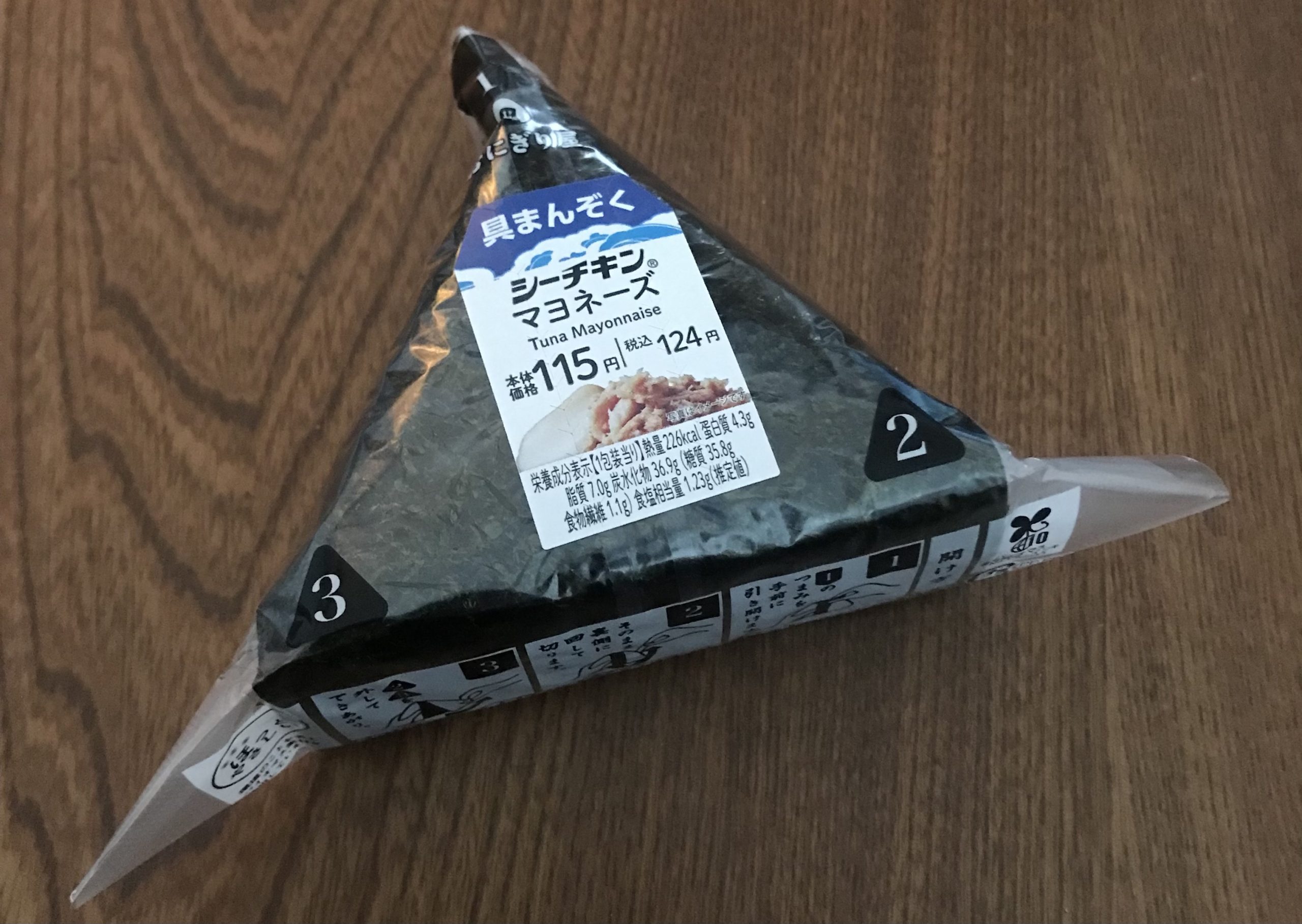With iffy flavours like pickled plum, mustard seeds, and fish eggs – tuna mayonnaise is a calming medium by being, in true onigiri fashion, deliciously bland.
Tuna mayo embodies all the best qualities of onigiri: understated, predictable, and moreish. When I ask people their favourite rice ball flavour, the answer is often tuna mayo.
Mayo is a key ingredient. Japanese mayo is a tier above its western counterpart. This is because, while western mayonnaise incorporates whole eggs, the Japanese variety only uses yolks of a particular yellow.
Combined with rice vinegar, the result is a creamy sauce akin to custard; fatty, sweet, rich, and acidic. The chief brand even has an adorable name, kewpie. The logo is a naked red angel baby doing the YMCA, and the nozzle is cut like a star so that the sauce squirts out in a funny shape. Cute, bizarre, novel, and delicious. Japanese mayonnaise.
Yet, like a surprising number of popular Japanese foods, Japanese mayonnaise isn’t very Japanese in origin.
It began just over 100 years ago when a political upheaval opened the proverbial floodgates between Japan and the west. This period is called the Meiji Restoration and marks the nation’s transition from Samurai warriors and ritual suicide to Hello Kitty and the highest life expectancy on earth. Large sections of Japanese society embraced western clothing, ideas, technology and food. It was during this time that mayonnaise, the whitest food of all, entered Japan.
So began a legacy of abuse. Noodles, pancakes, fried chicken, octopus balls, melon – few foods escape mayo. There’s even a Japanese word for a mayonnaise-obsessed individual, Mayora. This comes from merging the word mayo with the suffix “er” (as in “fighter” and “driver”) essentially creating the label “mayonaiser”.
Overall, the mayonnaise that completes a Tuna Mayo onigiri is special not just because it’s delicious, nor because it is everywhere, but because it represents one of Japan’s most remarkable qualities.
Few countries do cultural fusion like Japan. This land has a long history of adopting foreign concepts so zealously that one could be forgiven for thinking these things weren’t Japanese to begin with. Food is a key example, although others range from video games to toys to world religions. Mayonaise, ramen, tempura, even the very custom of eating meat – these pillars of Japanese cuisine are imports that arrived during the Meiji Restoration.
Tuna mayo embodies all the best qualities of onigiri; it also embodies some of the best qualities of Japan. In a long-winded sort of way, you can see this when you peel back the nori. Hell, you can taste it too. It’s very good.


Very good review, Talisker. Keep up the good work!
https://youtu.be/Z4ayRtaJdMs
I hate fish & usually just get chicken on rice, but now I suddenly want some tuna mayo.